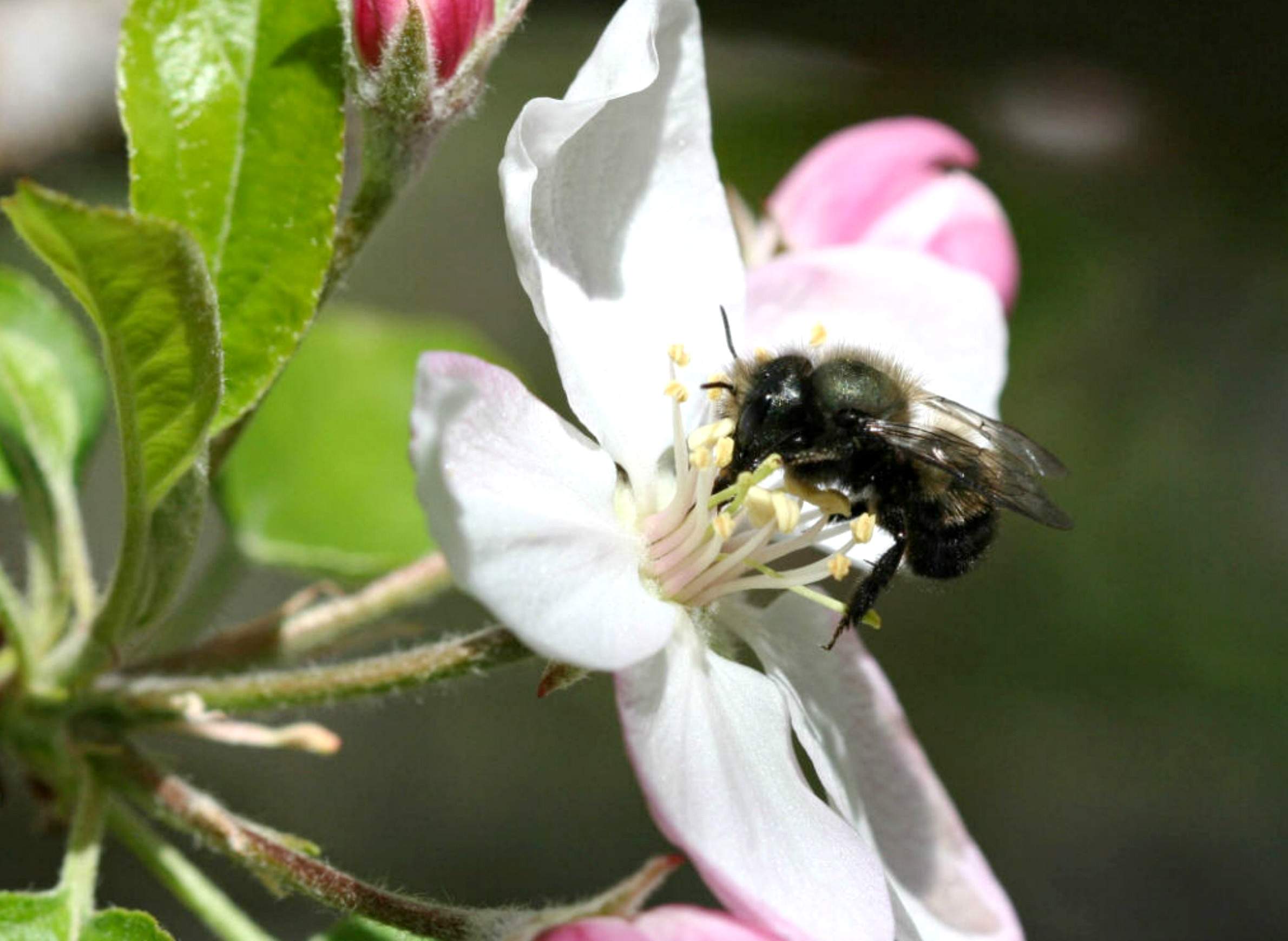
The blue orchard mason bee is a pollinator of tree fruit crops.

The blue orchard mason bee is a pollinator of tree fruit crops.
Farmers around the United States are contending with the collapse of honeybee colonies they depend on to pollinate numerous crops, including many fruits, vegetables, legumes and nut trees. But growers in southern Wisconsin look to be in better shape because the Badger State is home to about 500 species of native wild bees that are excellent pollinators.
"Southern Wisconsin, I think, has a very health, robust wild bee community," said Rachel Mallinger. "We have a strong wild bee community that is providing really great pollination services for our crops."
Now a research entomologist with the U.S. Department of Agriculture, Mallinger offered this assessment when she was a graduate student in the University of Wisconsin-Madison Department of Entomology, in a March 26, 2014, presentation for the Wednesday Nite @ the Lab lecture series on the UW campus. Her talk about wild bees, their biology, and her research on pollination and the conservation of these insects in Wisconsin was recorded for Wisconsin Public Television's University Place.
Apple growers are highly dependent on honeybees and wild bees for carrying pollen among different trees within a species. Mallinger's research examined how effective wild bees and honeybees are at pollinating apple trees in southern Wisconsin orchards. She did not find any benefit to renting honeybees to pollinate these trees — Wisconsin's native bees can handle the task of producing an abundance of pollinated flowers to develop into fruit.
Mallinger also found that the greater the diversity of wild bees in a given area, the more pollinated flowers turn into fruit. Indeed, diversity of species is more important for pollination than the actual number of individual bees. Bees in different species interact while foraging, and force each other to move among more flowers, leading to additional cross-pollination.
With changes in how humans use and develop land, including for agricultural purposes, some species of wild bees are declining in number while others increase in abundance. Research published in 2013 on bees in the northeast United States found a given species' size, nesting site and whether it is parasitic affect its outlook — small bees and parasitic bees seem to be doing well.
Mallinger's research in Wisconsin also found that the number of wild bee species increased with the diversity of landscapes.
Wisconsin farmers, landowners and residents curious about these creatures can consult the WI Wild Bee Guide, which uses photos and questions to to identify specific species. Mallinger contributed to this project, which was developed through the Great Lakes Bioenergy Research Center.
Key facts
Key quotes